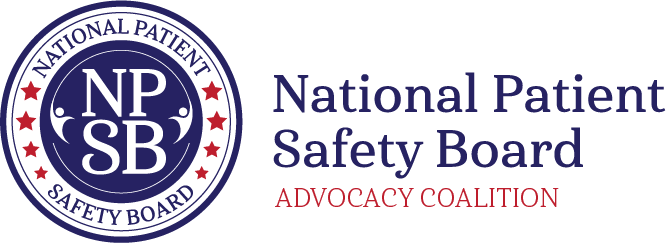Patient Safety Often Overlooked in Mental Health Settings
National Patient Safety Board urged for Behavioral Health Package on Capitol Hill
November 2, 2021
WASHINGTON D.C.—Senate Finance Committee Chairman Ron Wyden (D-OR) and Ranking Member Mike Crapo (R-ID) received an urgent appeal yesterday.
A growing coalition of health care experts say there’s a pressing need to establish a national infrastructure to monitor and prevent safety events in mental health settings. The Behavioral Health Package contemplated by the Senate must address the crisis in preventable medical errors that’s been escalating in the U.S. for two decades.
How? Establishing a National Patient Safety Board (NPSB), modeled after the National Transportation Safety Board (NTSB), is a crucial component of the solution.
In response to Senators Wyden and Crapo’s bipartisan September 21 request for information for legislative ideas to improve healthcare services for Americans with mental health and substance use disorders, the coalition responded:
“Our nation must increase the safety and reliability of mental health care to protect patients and providers, increase the public’s trust in mental health providers, and help reduce the stigma associated with receiving mental health services,” writes Dr. Karen Wolk Feinstein, chair of the National Patient Safety Board Policy & Advocacy Coalition.
The NPSB Policy & Advocacy Coalition is composed of representatives from hospitals, health systems, insurers, patient safety groups, consumer advocates, foundations, universities, technology companies, employers, and other purchasers of healthcare. A list of coalition members can be found here.
The NPSB’s three core functions would improve patient safety in mental health settings in the following ways:
1. Identifying Patient Safety Events. The NPSB would establish an interagency coordinating committee to review, update and prioritize patient safety indicators in mental health settings. Once adverse events are identified, the NPSB would autonomously collect anonymous data from electronic health records and other data sources.
2. Studying the Root Causes of the Patient Safety Events. A study division at the NPSB would determine the systemic risk and potential learning. The analyses would have one sole purpose: to establish facts, circumstances and causes or probable causes of patient safety events.
3. Issuing Recommendations to Prevent Patient Safety Events. The NPSB would then create nonpunitive recommendations for providers and healthcare agencies.
Prior to COVID-19, medical errors were the third-leading cause of death in the United States, after heart disease and cancer.
To learn more, subscribe to “Up Next for Patient Safety,” a podcast series examining the ongoing patient safety crisis in the U.S. and what must be done about it. The next episode—coming this week—looks at health equity within patient safety.
About the National Patient Safety Board
A proposed new independent federal agency, the National Patient Safety Board (NPSB) would model in part the National Transportation Safety Board within health care. The NPSB would improve and promote public health and welfare by monitoring and anticipating adverse events, creating recommendations and solutions to prevent medical error, and bringing lessons into practice. A coalition of leading healthcare organizations and experts are advancing the call to expeditiously form the NPSB. The public is invited to “Get on Board” with the NPSB today by staying informed and vigilant, visiting npsb.org. Like the NTSB, the NPSB will save lives.
Contact:
Scotland Huber
PRHI Chief Communications Officer
412-594-2553
huber@prhi.org
